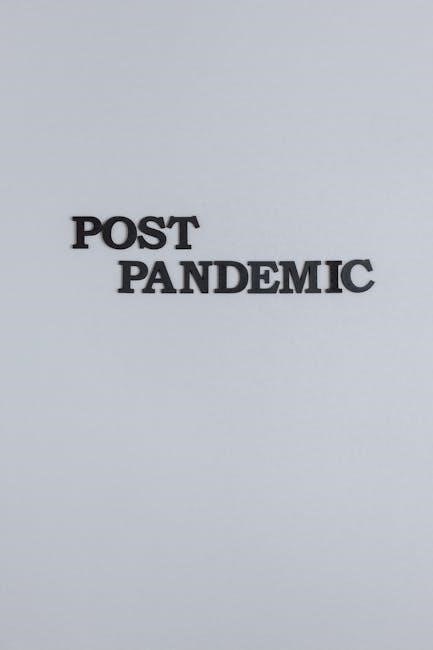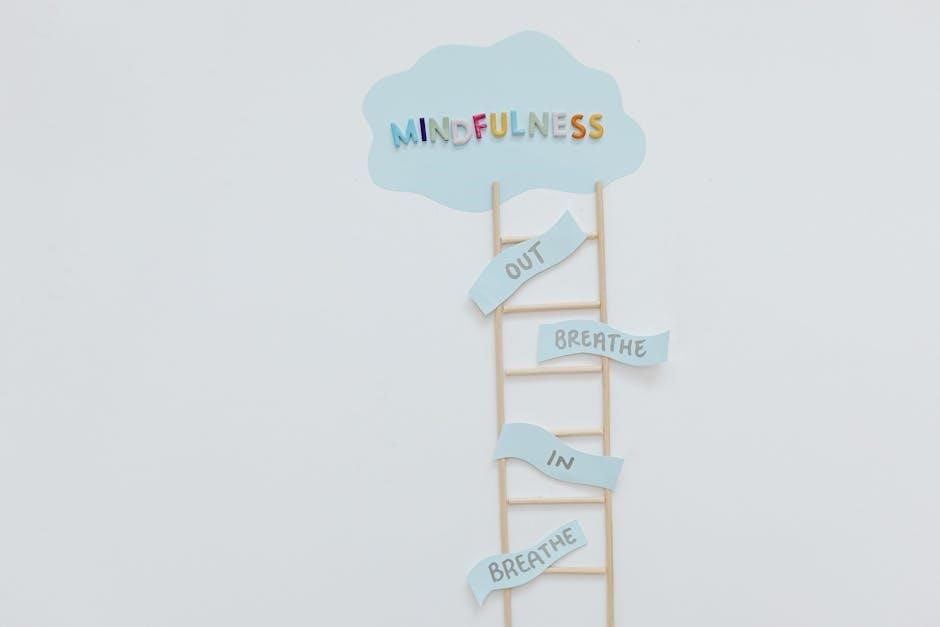Transition words are essential for connecting ideas, enhancing coherence, and ensuring smooth flow in writing. They guide readers through logical relationships, making content clearer and more engaging.
What Are Transition Words?
Transition words are specific terms used to connect ideas, sentences, or paragraphs, ensuring a logical flow in writing. They indicate relationships like addition, contrast, cause-effect, or time sequences, helping readers follow the argument. Common examples include however, therefore, and meanwhile. These words act as bridges, making content clearer and more coherent. In educational resources, transition words exercises in PDF formats often include fill-in-the-blank or multiple-choice tasks. These exercises help learners practice identifying and applying appropriate transitions. Worksheets with answers provide immediate feedback, enabling students to track their progress. Transition words are vital for effective communication, and mastering them enhances writing quality and readability.

Importance of Transition Words in Writing
Transition words are crucial for enhancing the clarity and coherence of written content. They connect ideas, sentences, and paragraphs, ensuring a smooth flow that guides readers through the text. By using transition words, writers can indicate relationships like addition, contrast, cause-effect, or time sequences, making their arguments more logical and engaging. These words prevent abrupt shifts between ideas, improving readability. In educational materials, transition words exercises in PDF formats with answers are valuable tools for learners to practice identifying and applying appropriate transitions. Such exercises help develop writing skills, ensuring that students can convey their ideas effectively and maintain the reader’s understanding. Mastering transition words is essential for producing polished, professional, and impactful writing.

Types of Transition Words
Transition words include categories like addition, contrast, cause-effect, time, concession, and summarizing. They help clarify relationships between ideas, enhancing the flow of written content effectively.
Transitional Words for Addition
Transitional words for addition connect ideas by introducing new information or expanding on a point. Common examples include also, furthermore, additionally, moreover, besides, too, likewise, and in addition. These words help to build upon previous statements, ensuring a smooth flow of ideas. For instance, in a sentence like “I enjoy reading books; also, I love writing stories,” the transition word also bridges the two related ideas. Such words are crucial for maintaining coherence and showing the addition of details in writing. They make the text more engaging and easier to follow, guiding the reader through the accumulation of ideas seamlessly.
Transitional Words for Contrast
Transitional words for contrast are used to highlight differences or contradictions between ideas. Common examples include however, on the other hand, in contrast, nevertheless, nonetheless, otherwise, and despite. These words signal to the reader that an opposing viewpoint or alternative idea is being introduced. For instance, in a sentence like “She wanted to travel; however, her schedule was too busy,” the transition word however emphasizes the contrast between desire and reality. Such words are vital for showing contradictions, highlighting differences, or redirecting the argument in a clear and logical manner. They ensure the text remains coherent while presenting contrasting ideas effectively.
Transitional Words for Cause and Effect
Transitional words for cause and effect establish relationships between actions and their consequences. Common examples include because, since, as a result, consequently, therefore, thus, and due to. These words help writers explain why something happens or what happens as a result. For example, “He forgot his umbrella; as a result, he got soaked in the rain.” Such transitions clarify cause-and-effect relationships, making the writing more logical and easier to follow; They are essential for explaining sequences of events, showing motivations, and linking outcomes to their origins. Proper use of these transitions enhances clarity and ensures the reader understands the causal connections within the text.
Transitional Words for Time and Sequence
Transitional words for time and sequence organize events chronologically. Common examples include first, next, meanwhile, then, after, before, during, while, and finally. These words help structure narratives or explanations by indicating the order of events. For instance, “She first researched the topic, then outlined her essay, and finally wrote the conclusion.” Such transitions ensure that ideas are presented logically, making it easier for readers to follow the progression. They are particularly useful in storytelling, procedural writing, and historical accounts where timing is crucial. Using these transitions effectively helps maintain a clear and coherent flow in the text.
Transitional Words for Concession and Contrast
Transitional words for concession and contrast introduce opposing ideas or unexpected results. Examples include however, on the other hand, although, even though, despite, in spite of, while, whereas, and though. These words help writers present contrasting viewpoints or acknowledge exceptions, enhancing the depth of their arguments. For instance, “I wanted to attend the concert, but I had prior commitments.” They signal to readers that an alternative perspective or a contrasting idea is being introduced. Proper use of these transitions ensures that contrasting ideas are clearly differentiated, maintaining logical flow and coherence in writing. Mastering these words is essential for effectively conveying nuanced relationships between ideas in various contexts.
Transitional Words for Summarizing and Concluding

Transition Words Exercises
Engage with various exercises to master transition words, including fill-in-the-blank, multiple-choice, and identifying transitions in context. These activities enhance understanding and proper usage of transitional phrases effectively.
Fill-in-the-Blank Exercises
Fill-in-the-blank exercises are a popular way to practice using transition words effectively. These exercises typically provide sentences or short paragraphs with missing words, and students must choose the most appropriate transition word from a list. For example, a sentence might include a blank space like: “I wanted to go to the park, but ______ I realized it was raining.” Students would then select a transition word like “however” or “meanwhile” to complete the sentence correctly. Answer keys are often provided, allowing students to check their work and learn from their mistakes. These exercises help students understand how to connect ideas logically and improve the flow of their writing. They also encourage critical thinking about the relationships between sentences and paragraphs, making them an essential tool for mastering transition words.
Multiple-Choice Exercises
Multiple-choice exercises are another effective way to practice transition words, offering students a structured approach to learning. Each question presents a sentence or short paragraph with a missing transition word, followed by several options. For example: “I studied hard for the exam, ______ I still felt nervous during the test.” The options might include “however,” “therefore,” or “meanwhile.” Students select the most appropriate transition word, and answer keys provide immediate feedback. These exercises help students identify the correct context and logical flow for each transition word. They also reinforce understanding of different transition categories, such as addition, contrast, or cause and effect. Regular practice with multiple-choice exercises improves writing clarity and enhances the ability to connect ideas seamlessly.
Identifying Transitions in Context
Identifying transitions in context exercises require students to analyze sentences or passages and recognize the transition words used. These exercises often present a paragraph with several transition words embedded within, and students must underline or highlight the transitions. For example, in the sentence: “She studied for hours; therefore, she felt confident about the exam,” the transition word “therefore” would be identified. These exercises help students understand how transitions function within a larger context to connect ideas. Answer keys are provided to confirm the correct transitions, offering immediate feedback. Regular practice improves the ability to recognize and interpret transitions, enhancing both reading comprehension and writing skills. This method fosters a deeper understanding of how transitions contribute to logical flow in written text.
Transition Words Worksheets and PDFs
Transition words worksheets and PDFs are valuable resources for practicing and mastering the use of transitions. They offer exercises, activities, and answer keys to reinforce learning.
Sources for Transition Words Worksheets
Transition words worksheets and PDFs are widely available online, offering exercises and activities to practice using transition words effectively. Websites like Education.com, Teachers Pay Teachers, and Canva provide downloadable resources tailored for different grade levels. These worksheets often include fill-in-the-blank exercises, multiple-choice questions, and sentence completion tasks. Many resources also offer answer keys, making them ideal for self-study or classroom use. Additionally, platforms like Google Classroom and Pinterest host a variety of printable transition word exercises. These tools are designed to enhance writing skills, improve logical flow, and reinforce the proper use of transitional language in sentences and paragraphs.
How to Use Transition Words Worksheets Effectively
To use transition words worksheets effectively, start by identifying the learning objective and the student’s skill level. Begin with basic exercises, such as fill-in-the-blank sentences, to familiarize students with common transition words. Encourage students to read sentences aloud to understand how transitions improve flow. For advanced learners, incorporate complex sentences or short paragraphs requiring multiple transitions. Peer discussion and group work can enhance understanding and application. After completing exercises, review answers collectively to clarify misconceptions. Encourage self-practice by providing additional worksheets or online resources. Track progress over time to refine skills and build confidence in using transition words effectively in writing.

Teaching Transition Words

Introduce transition words with examples, starting with simple exercises like fill-in-the-blank sentences. Use group work to practice identifying and applying transitions in context, fostering collaborative learning and immediate feedback to refine skills effectively.
Strategies for Teaching Transition Words
Effective teaching involves introducing transition words through structured exercises like fill-in-the-blank sentences and multiple-choice questions. Start with basic categories such as addition, contrast, and time. Use group activities to encourage peer learning and immediate feedback. Provide clear examples and explanations, then allow students to practice independently. Incorporate real-life contexts to make learning relatable. Regularly review and reinforce concepts to ensure mastery. Utilize technology, such as interactive games and online tools, to engage students and track progress. Offer personalized feedback to address individual needs and encourage self-practice with downloadable PDF worksheets. This comprehensive approach ensures students grasp and apply transition words confidently in their writing.
Common Mistakes to Avoid When Teaching Transition Words
When teaching transition words, avoid overloading students with too many terms at once, as this can lead to confusion. Ensure each transition is clearly defined and contextualized. Do not neglect providing ample practice opportunities, as understanding requires application. Be cautious not to overlook individual needs; some students may require additional support. Avoid using transitions in isolation—always demonstrate their role within broader sentences or passages. Do not assume prior knowledge; start with basics and build progressively. Misusing transitions yourself can confuse learners, so model correct usage consistently. Finally, avoid making exercises too repetitive, as this can disengage students. Balance practice with creative activities to maintain interest and deepen understanding.

Answer Keys and Solutions
Answer keys provide correct solutions for transition word exercises, enabling students to verify their work and understand their mistakes effectively for improved learning.
Importance of Answer Keys in Learning Transition Words
Answer keys are vital for mastering transition words as they provide clear corrections and explanations, helping learners identify errors and understand proper usage. They ensure accuracy, build confidence, and reinforce learning by offering immediate feedback. With answer keys, students can self-assess their progress, track improvement, and focus on areas needing review. This tool is especially useful for independent study, allowing learners to verify their understanding without instructor guidance. Additionally, answer keys promote self-paced learning and accountability, making them an indispensable resource for effective language acquisition and writing skill development. Their availability in PDF formats enhances accessibility, ensuring learners can practice and review anytime, anywhere. This convenience supports consistent practice, which is crucial for achieving fluency in using transition words effectively.
How to Create Effective Answer Keys
Creating effective answer keys involves clarity, accuracy, and detailed explanations. Start by aligning answers with exercise objectives, ensuring each response directly addresses the question. Use correct grammar and spelling to set a standard for learners. Provide explanations for each answer, highlighting why it is correct and, when applicable, why others are not. Organize answers logically, matching the structure of the exercises. Include page or question references for easy navigation. Use bold or color-coding to make answers stand out. Regularly review and update keys to maintain relevance and accuracy. Consider adding examples or cross-references to additional resources for deeper understanding. Finally, ensure accessibility by formatting keys in clear, readable fonts and layouts. This approach ensures answer keys are both informative and user-friendly, enhancing the learning experience.

Best Practices for Using Transition Words Exercises
Use exercises that align with learning levels, incorporate interactive tools, and emphasize context. Provide clear instructions and examples, encourage self-practice, and ensure proper usage to enhance effectiveness.
Tailoring Exercises to Different Learning Levels
Tailoring transition word exercises ensures they meet the needs of diverse learners. For beginners, use simple sentences with basic transitions like and or but. Intermediate learners can handle complex sentences with multiple transitions. Advanced learners benefit from analyzing texts to identify transitions. Incorporate visual aids and real-life examples to make exercises engaging. Provide answer keys for self-assessment and accuracy. Adjust difficulty by varying sentence length and transition types. This approach ensures learners progress effectively, mastering transition words at their own pace. Tailored exercises enhance understanding and application, making learning more impactful and relevant. Use worksheets with clear instructions to guide learners seamlessly. Ensure exercises align with curriculum goals for optimal results. This method fosters confidence and improves writing skills significantly.
Encouraging Self-Practice and Review
Self-practice and review are crucial for mastering transition words. Provide learners with PDF worksheets containing fill-in-the-blank and multiple-choice exercises. Include answer keys for self-correction, fostering independence and accountability. Encourage daily practice with varied exercises to reinforce learning. Offer interactive online tools and games to make review engaging. Create a routine where learners dedicate time to review and apply transition words in their writing. This consistent practice enhances retention and improves writing clarity. Emphasize the importance of revisiting past exercises to solidify understanding. Use progress tracking to motivate learners and celebrate improvements. Regular self-practice strengthens the ability to use transition words effectively, ensuring smoother and more coherent writing. Make review a habit to develop lifelong writing skills.

Common Challenges When Using Transition Words
Overuse or misuse of transition words can disrupt writing flow. Learners often struggle with choosing the right transition or using them excessively, leading to confusion or redundancy.
Overuse or Misuse of Transition Words
Overusing transition words can clutter sentences, making them feel redundant or even comical. Misusing them, such as choosing the wrong type, disrupts logical flow and confuses readers. Learners often insert transitions where none are needed or select inappropriate ones for the context. This can weaken the clarity and effectiveness of their writing. For example, using “however” instead of “in addition” changes the intended relationship between ideas. Proper exercise and practice, as found in PDF worksheets, help students identify and correct these errors, ensuring transitions enhance rather than hinder their work.
Maintaining Logical Flow with Transitions
Maintaining logical flow with transitions ensures that ideas are connected smoothly, guiding readers through the writer’s thoughts seamlessly. Proper use of transition words clarifies relationships between sentences, whether showing time, cause-effect, contrast, or addition. Worksheets and PDF exercises help learners practice identifying and applying the right transitions. For instance, using “first” and “next” establishes sequence, while “however” signals contrast; Misplacement can disrupt flow, leading to confusion. Through practice, students learn to choose transitions that enhance readability and coherence, ensuring their writing is clear and logically structured from start to finish. Regular exercises, as provided in PDF resources, reinforce these skills effectively.

Integrating Technology in Transition Words Exercises
Technology enhances transition word practice through interactive exercises, online tools, and gamified learning platforms, making it engaging and accessible for diverse learners to master transitions effectively.
Online Tools for Practicing Transition Words
Online tools offer innovative ways to practice transition words, making learning interactive and fun. Platforms like Kahoot! and Quizlet provide engaging exercises, while websites such as Grammarly and Purdue OWL offer detailed guides and quizzes. Additionally, specialized apps like Transition Words Workout and English Grammar Exercises include interactive games and fill-in-the-blank activities. These tools often feature progress tracking, allowing learners to monitor their improvement. Many platforms also include downloadable PDF worksheets with answers, combining digital convenience with traditional practice methods. Such resources cater to diverse learning styles, ensuring that users can master transition words effectively. They are particularly useful for self-paced learning and classroom activities, making the process of understanding transitions both enjoyable and efficient.
Interactive Exercises and Games
Interactive exercises and games make learning transition words engaging and enjoyable. Online platforms offer a variety of activities, such as crossword puzzles, drag-and-drop games, and sentence-building exercises, that help users practice transition words in a dynamic way. These tools often include timers and scoring systems to enhance motivation. For example, games like “Transition Word Match” or “Sentence Builder” challenge users to apply transitions correctly in context. Many of these exercises are accompanied by immediate feedback, allowing learners to identify and correct mistakes. Additionally, interactive quizzes and word searches provide a fun way to reinforce understanding. These resources are particularly effective for visual and kinesthetic learners, as they combine interactivity with practical application, making the learning process both enjoyable and effective; They are accessible on both desktop and mobile devices, offering flexibility for learners of all ages and skill levels.
